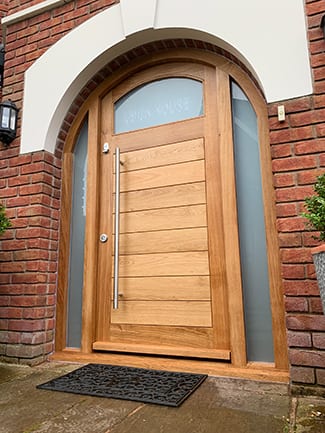Trickle Vents: What are they? And do I need Them In My Home?
The focus on thermal comfort and energy efficiency in recent years has led to homes being sealed against drafts as never before. However, as homes become more airtight, indoor air quality may be negatively impacted as pollutants and condensation can build up. If pollutants and moisture cannot escape, the health of those living in the home is put ultimately at risk. Background ventilation is therefore necessary to maintain a healthy, comfortable environment for the people living in a house, which is why trickle vents are now incorporated into many window frames.
What are Trickle ventilators?
Trickle ventilators (or trickle vents) are used to provide background ventilation in a home when a window is closed, contributing to a healthy living environment by enabling unobtrusive and controlled whole-room ventilation.
A trickle vent sits on top of a window frame and allows a small stream of fresh air to pass through the room from the outside, which can be easily adjusted using cords, rods, or simply by hand.
The benefits of installing trickle ventilators:
Cleaner air for your home
Background ventilation in your home may help to reduce the severity of respiratory health problems by reducing background air levels of pollutants such as carbon monoxide and carbon dioxide. It can also help provide effective background ventilation.
Window Security
A trickle ventilator allows for constant ventilation when a window is closed and/or locked, the trickle vent opening is usually less than 20 mm wide, preventing human intrusion into your home.
Condensation reduction
Replacing older windows with modern double glazed units, which include a trickle vent, a thermal break in the window frame, and a wide air gap between glass panes, may improve condensation problems and possibly reduce subsequent mould growth and internal surface damage.
Cost effective
Trickle vents are an inexpensive form of background ventilation without the need for air bricks. Trickle vents are passive, and as a result, they do not require ongoing electricity costs. The ventilation of a room using trickle vents is more flexible than using air bricks, as they allow you to control the amount of ventilation you wish to have.
Are trickle vents mandatory?
When replacing a window, having a trickle ventilator built into the window frame is not mandatory unless the existing window already has one OR an alternative method of ventilation already exists to provide adequate ventilation to the home. If a tickle vent is present, the new trickle ventilator must offer at least the same airflow performance as the existing trickle vent.
Trickle vent designs
Trickle vents can be added to the frame of new casement windows, sash windows and roof windows. They are suitable for all types of frames but cannot however be retro fitted to an existing window frame.
Consider how tall the window will be, if you need to get onto a chair to open or close the trickle vent then it is unlikely you will regularly use it. You may want to move it from the top of the frame to the bottom/sides or consider adding rods or cords to your new window order so the trickle vent can be easily opened or closed.
A through frame trickle vent design is often positioned through the top of the window frame. The trickle vent is integrated into the window frame itself.
An over the frame design is used when it is not possible to fit the trickle vent through the window frame. The trickle vent makes provision for the ventilation to be routed over the frame or head of the window.
The trickle vent is fitted into the glazed window area along the top of the sealed double glazed glass window unit.
If you still need help and advice when it comes to Trickle Vents and the best solution for your home, simply give us a call or get in touch and we can provide the right advice for your home project.

